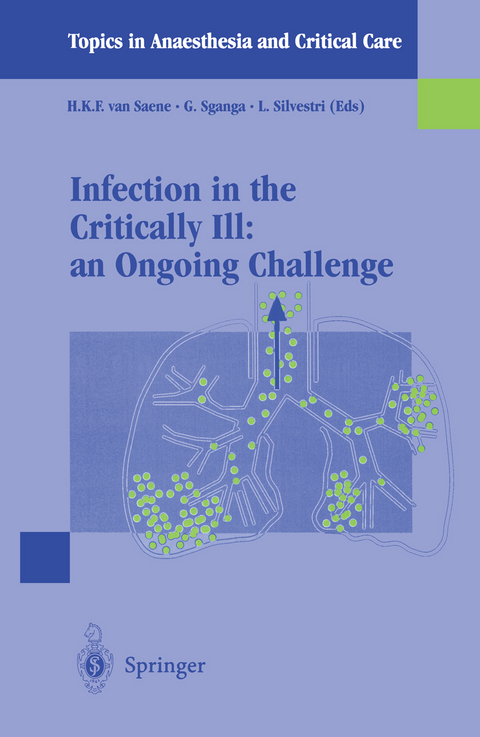
Infection in the Critically Ill: an Ongoing Challenge
Springer Verlag
978-88-470-0138-1 (ISBN)
Infections contracted by patients constitute an important factor in the manage- ment of any hospital unit. For patients with weakened resistance due to trauma, after surgery and in intensive care, infection-related complications have a nega- tive impact on care quality indicators, specifically in terms of protracted hospi- talisation time, increased costs from complications and extended hospitalisation, and increased mortality rate. Effective strategies to prevent and treat infections are a priority in optimising the cost-effectiveness of care. Infection control, diag- nostics and targeted antibiotic therapy require an integrated epidemiological, microbiological and clinical approach. This is indispensable for critically ill patients, especially when the processes of infection and sepsis are supported by micro-organisms which are multidrug-resistant and difficult to root out. The importance of this subject has been demonstrated by a European obser- vational study on the prevalence of hospital infections in patients under intensive care.
In this study, the prevalence of infections contracted in a "high-risk" envi- ronment was 21 %, while other studies have observed that the incidence of pneu- monia in patients undergoing artificial ventilation varied between 8% and 54%, with a median of 24%. These figures alone are enough to show the clinical impor- tance of the infective process and the need for continuous interdisciplinary updating and exchanges of experience.
1 — Pneumonia Management in the Intensive Care Unit: an Integrated Approach.- 2 — Diagnostic Tools for Ventilator-Associated Pneumonia.- 3 — Cost-Effectiveness of New Technology to Reduce Catheter-Related Bloodstream Infections due to Central Venous Catheters.- 4 — Peritonitis: Priorities and Management Strategies.- 5 — Bacterial Translocation.- 6 — Practical Aspects of Antibiotic Prophylaxis in High-Risk Surgical Patients.- 7 — The Usefulness of Surveillance Cultures: a Prospective Cohort Study on the ICU.- 8 — Microbiology for the Critically Ill Patient Receiving Selective Decontamination of the Digestive Tract.- 9 — The Role of Surveillance Cultures in Containing Antibiotic Resistance.- 10 — Multi-Resistant Gram-Negative Bacilli: Impact of Antibiotic Restriction.- 11 — Multi-Drug-Resistant Staphylococci and Enterococci.- 12 — Therapeutic Options for the Treatment of Gram-Positive Infections.- 13 — Control of Methicillin-Resistant Staphylococcus aureus Outbreaks.- 14 — Oral Vancomycin in the Control of MRSA Outbreaks in the ICU.- 15 — Control of Acinetobacter Outbreaks with Oral Polymyxin.- 16 — An Approach to Controlling Acinetobacter Outbreaks in the ICUs.- 17 — Prevention of the Emergence of resistence.- Main Symbols.
| Erscheint lt. Verlag | 1.3.2001 |
|---|---|
| Reihe/Serie | Topics in Anaesthesia and Critical Care |
| Zusatzinfo | 7 Illustrations, black and white; XIII, 185 p. 7 illus. |
| Verlagsort | Milan |
| Sprache | englisch |
| Maße | 155 x 235 mm |
| Themenwelt | Medizin / Pharmazie ► Medizinische Fachgebiete ► Intensivmedizin |
| Studium ► Querschnittsbereiche ► Infektiologie / Immunologie | |
| ISBN-10 | 88-470-0138-2 / 8847001382 |
| ISBN-13 | 978-88-470-0138-1 / 9788847001381 |
| Zustand | Neuware |
| Haben Sie eine Frage zum Produkt? |
aus dem Bereich


